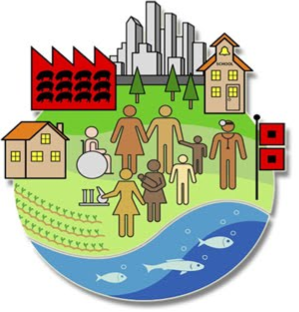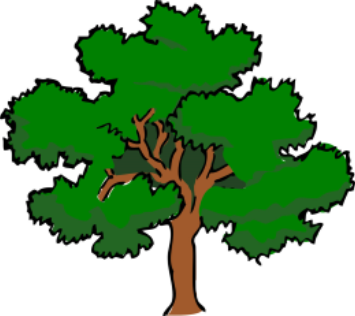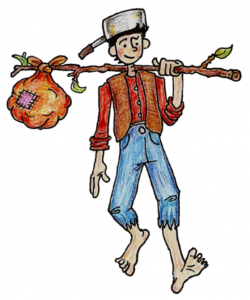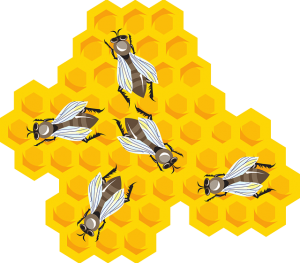You might be wondering, “What’s made from Trees?” Look around, almost everything is made of wood in one form or another. It may astonish you! From Rolling Pins to Space Craft Reentry Shields; trees are something to behold. We can’t list them all – but here’s to making a dent in the list.
Trees supply us with over 5000 products

We see products made from trees in every aspect of our lives.
Without Trees, life would be dismal, almost impossible and certainly unimaginable. Grown from nature, wood is environmentally safe, biodegradable, strong, flexible, renewable and produces over 5000 products.
By the time a tree is cut into logs and reaches the mill, there is virtually zero waste. Zero. This is because forest product companies are incredibly efficient, using sawdust and other wood waste to furnish as much as 75% of their energy needs. By the time a tree is cut into logs and reaches the mill, there is virtually zero waste. Zero.
This is because forest product companies are incredibly efficient, using sawdust and other wood waste to furnish as much as 75% of their energy needs.
So, What’s Made from Trees?
BIO ENERGY: Charcoal, Biofuel, Firewood, Gasification, Pellets, Biomass,
COSMETICS, MEDICINAL: Toothpaste, Soap, Makeup, Nail Polish, Hair Dye, Antiseptics, Expectorants, Stimulants, Vitamins, Herbal Supplements, Sponges, Disposable Medical Clothing, Diapers, Artificial Kidney Membranes, Absorbent Waddings
EVERYDAY LIFE: Cars, Tires, Art, Furniture, Lighting, Shoes, Shoes, Polish, Rubber Gloves, Jewelry, Smoking Pipes, Pet food, Fish, Paint, Ink, , Adhesives, Turpentine, Solvents, Shoe Polish, Foam Rubber, Alcohol, Beer, Wine, Incense Sticks, Matches, Shatterproof Glass, Bird Houses, Toilet Seats, Luggage, Tools, Pencils, Rayon Clothing, Blankets
EXPLOLSIVES & FLAMABLES: Rocket Propellant, Fireworks, Acetone, Explosive Cordite, Charcoal, Activated Carbon, Black Powder Explosives
FARMING: Barns, Bee Hives, Feed & Animal Bins, Fencing, Green Houses, Livestock & Poultry feed, Cattle & Sheep Dip, Insecticide Sprays
FOOD & BEVERAGE: Jams, Jellies, Oils, Seasonings, Candy, Vinegar, Teas, Extracts, Wines, Alcohol, Fruits, Nuts, Syrups
KITCHEN: Cutting Boards, Chopsticks, Bowls, Baskets, Spoons, Tongs, Countertops, Thickeners, Rolling Pins, Wax Paper, Coffee Filters, Sausage Casings, Food Grade Thickeners, Grocery Bags, Paper Cups & Plates, Egg Cartons, Corks
MANUFACTURING: Construction Helmets, Fuel, Iron Smelting, Case Hardening Compounds, Producer Gas, Water Purification, Railroad Ties, Tar Oil , Gasoline, Paints & Stains, Preservatives, Solvents Oils, Creosote Oils, Disinfectants, Wood Preservatives
MARINE: Canoes, Motor Boats, Naval Craft, Sail Boats, Floatation compounds & Oils, Waterproofing, Fishing Poles
MUSIC: Guitars ( electric, acoustic, bass, classical), Violins, Harps, Sitars, Banjo, Dulcimer, Zither, Viola, Lyre, Mandolin, Oud, Rainstick, Didgeridoo, Drums, Drumsticks, Piano’s, Tambourine, Castanets, Blues Harp (Harmonica), Recorders, Flutes, Xylophone
PAPER AND PULP PRODUCTS: Paper Towels, Wrapping, Paper, Filler, Varnishes, Toothpaste, Books, Newsprint, Toilet Paper, Bond Paper, Cardboard, Cement Sacks, Bags, Coffee Filters, Paper Towel’s
RECREATIONAL: Crayons, Surf Boards, Snowboards, Bicycles, Kayaks, Skates, Bowling Balls and Pins, Sports & Recreational Helmets, Ski Poles, Baseballs & Bats, Chessboards, Chinese Checker Boards, Puzzles, Cribbage Board, Dominoes, Jenga. Ping Pong Tables and Balls, Movies, Hockey Sticks, Kites, Golf Tees, Dart Boards

What’s Made from Trees?
TEXTILES: Clothing, Underwear, Socks, Bullet Proof Clothing, Blankets, Towels, Sheets, Mattresses
WOOD PRODUCTS: Particle Board, Mat Board, Corrugated Roofing Sheets, Insulation, Flooring, Molding, Beans, Veneers, Laminates, Poles, Cork, Mulch, Soil Conditioners, Reinforced Cement Blocks, Bio-plastics, Composites
And just in case, your curiosity is piqued, here are a few more to check out: Airplane Fuselage’ & Propellers, Artificial Kidney Membranes, Blood Pressure Medicine, Chocolate, Cocoa, Carob, Moth Repellent, Chewing Gum, Cinnamon, Quinine, Clothing, Clothing, Coffee, Cola Drinks, Dyes, All your favorite Fruits, Glycerin, Gin, Herbs, Maple Syrup, Seasonings, Woods for Smoking Meats and Fish. The many reasons to care for our beloved trees becomes increasingly more important as time goes by. We continue to find increasingly green and sustainable ways to survive in this world with less impact to Mother Earth. Who knows what future inventors will create using the natural resources available to us now. Take care of every tree you have – remember, their loss is our loss.
When is it OK to Cut Down a Healthy Tree (and not feel guilty)?
/in Uncategorized /by siteadminWhich leads to this: before you make that decision to cut down a healthy tree, please contact a tree care professional to get the straight scoop. They’ll advise if it’s truly necessary to take down the entire tree or if a limb removal is a better option. They’ll advise you on the physical impact of other trees in the area or simply help you come to a decision you won’t later regret. A good tree care professional doesn’t judge; he/she understands that yes, sometimes even good trees must go.
Construction – keeping up with the Jones’s
You’re building new, adding on, laying a patio, an electronic underground dog fence, utility or water lines, sprinkler systems or putting in a deck or pool. All these may affect your trees depending on the proximity. Your contractor may be the kind of person who says, “off with its head!”, if they even think it will inhibit their ability to get the job done.
Or conversely, you may be told the tree is good to stay, only to learn later the utility contractors cut the primary roots in an effort to lay their lines. You won’t even know it happened until one, two or three years later when that beautiful tree you took the extra effort to keep is beyond saving. Cutting down an existing tree will change the exposure of those left standing. Where there was once shade and shield, there may now be sun and wind; all elements that can severely impact a trees ability to survive. Yes, trees do get sunburned!
That is why you don’t let your obstetrician advise you on open heart surgery or your contractor advise you on trees. You speak with the professionals who do the job for a living. A good tree care professional will have no problem letting you know what is outside of their scope. They will want to point to the right professional for the situation.
Aesthetics: Beauty and the wondrous symmetry of Yin/ Yang
Perhaps the type of tree is unappealing. Maybe it’s old, failing and has been ill pruned too often by amateurs and will never be the vision of youth it once was. Perhaps you don’t like its proportion in proximity to buildings or other trees. It could be the placement is, in fact, crowding its’ roots which will eventually cause the tree or other surrounding trees to die.
Politics: The art keeping your neighbors happy
Maybe you love the tree but your neighborhood association doesn’t. Perhaps your next-door neighbor is really spooked by your weeping willow branches clawing like the hand of the Hunchback of Notre’ Dame at her window in the middle of the night (This actually happened with my next-door neighbor when I was a child. The poor woman deserves some sleep for cripes sake, doesn’t she?)
Do a web search on “Trees and Neighbors” and you’ll find it’s a common complaint. In general, your tree is your responsibility and if others property or person are harmed by your negligence to properly care for your tree, it’s on you. That said, your neighbor has the right to hack off any portion of your tree that overhangs and is harming their property as long as it doesn’t irreparably harm your tree. So, use the Golden Rule; before you make that first cut on the limb over your yard, call the owner and talk. Make nice and the universe will be good to you.
Yard keeping: Trees that make us work
Sometimes trees are just plain “messy”. Among those that have earned the distinct pleasure of making the “Top Ten Worst Trees to Plant” are the mulberry, sweet gum, mimosa and cottonwood. The sweet gum also made the “Five Worst Trees for the Lazy Landscaper”, along with the catalpa (which made #1 on that list), the magnolia, and a few other trees. The list of messy trees is long. Even the most fetching trees with enticing flowers can wreak havoc on a weekend you planned to relax.
Ouch: Trees that hurt other living things
Do a search on the internet and you’ll find headlines such as “Black Walnut: The Killer Tree”, or “Growing the Poisonous Castor Bean”. They may sound a little melodramatic but the facts are that Jungone, the poison emitted from one black walnut tree can wipe out an entire garden if you haven’t done your homework to find plants that are Jungone resistant.
My neighbor has several and I’m constantly searching for plants that can survive its ravages. And the castor bean plant? According to Cornell University’s College of Agriculture and Life Science, “It is said that just one bean can kill a child”. The good news is that “If death does not occur in 3-5 days, the victim usually recovers.” Does that headline sound too melodramatic now?
Sometimes the lines are clear and easy to conclude but sometimes doing the “right” thing is just not so cut and dried. Does the end justify the means or vice-versa? It’s not worth divorce court or a neighborhood war. Compromise is your best bet so keep the tree when possible, remove or trim as appropriate and let peace reign. If that doesn’t work, you may just have to bite the bullet and let the criticism fly where it may.
Click here to download a PDF of Species of Trees in Kansas City.
You might be wondering, “What’s made from Trees?” Look around, almost everything is made of wood in one form or another. It may astonish you! From Rolling Pins to Space Craft Reentry Shields; trees are something to behold. We can’t list them all – but here’s to making a dent in the list.
Trees supply us with over 5000 products
We see products made from trees in every aspect of our lives.
Without Trees, life would be dismal, almost impossible and certainly unimaginable. Grown from nature, wood is environmentally safe, biodegradable, strong, flexible, renewable and produces over 5000 products.
By the time a tree is cut into logs and reaches the mill, there is virtually zero waste. Zero. This is because forest product companies are incredibly efficient, using sawdust and other wood waste to furnish as much as 75% of their energy needs. By the time a tree is cut into logs and reaches the mill, there is virtually zero waste. Zero.
This is because forest product companies are incredibly efficient, using sawdust and other wood waste to furnish as much as 75% of their energy needs.
So, What’s Made from Trees?
BIO ENERGY: Charcoal, Biofuel, Firewood, Gasification, Pellets, Biomass,
COSMETICS, MEDICINAL: Toothpaste, Soap, Makeup, Nail Polish, Hair Dye, Antiseptics, Expectorants, Stimulants, Vitamins, Herbal Supplements, Sponges, Disposable Medical Clothing, Diapers, Artificial Kidney Membranes, Absorbent Waddings
EVERYDAY LIFE: Cars, Tires, Art, Furniture, Lighting, Shoes, Shoes, Polish, Rubber Gloves, Jewelry, Smoking Pipes, Pet food, Fish, Paint, Ink, , Adhesives, Turpentine, Solvents, Shoe Polish, Foam Rubber, Alcohol, Beer, Wine, Incense Sticks, Matches, Shatterproof Glass, Bird Houses, Toilet Seats, Luggage, Tools, Pencils, Rayon Clothing, Blankets
EXPLOLSIVES & FLAMABLES: Rocket Propellant, Fireworks, Acetone, Explosive Cordite, Charcoal, Activated Carbon, Black Powder Explosives
FARMING: Barns, Bee Hives, Feed & Animal Bins, Fencing, Green Houses, Livestock & Poultry feed, Cattle & Sheep Dip, Insecticide Sprays
FOOD & BEVERAGE: Jams, Jellies, Oils, Seasonings, Candy, Vinegar, Teas, Extracts, Wines, Alcohol, Fruits, Nuts, Syrups
KITCHEN: Cutting Boards, Chopsticks, Bowls, Baskets, Spoons, Tongs, Countertops, Thickeners, Rolling Pins, Wax Paper, Coffee Filters, Sausage Casings, Food Grade Thickeners, Grocery Bags, Paper Cups & Plates, Egg Cartons, Corks
MANUFACTURING: Construction Helmets, Fuel, Iron Smelting, Case Hardening Compounds, Producer Gas, Water Purification, Railroad Ties, Tar Oil , Gasoline, Paints & Stains, Preservatives, Solvents Oils, Creosote Oils, Disinfectants, Wood Preservatives
MARINE: Canoes, Motor Boats, Naval Craft, Sail Boats, Floatation compounds & Oils, Waterproofing, Fishing Poles
MUSIC: Guitars ( electric, acoustic, bass, classical), Violins, Harps, Sitars, Banjo, Dulcimer, Zither, Viola, Lyre, Mandolin, Oud, Rainstick, Didgeridoo, Drums, Drumsticks, Piano’s, Tambourine, Castanets, Blues Harp (Harmonica), Recorders, Flutes, Xylophone
PAPER AND PULP PRODUCTS: Paper Towels, Wrapping, Paper, Filler, Varnishes, Toothpaste, Books, Newsprint, Toilet Paper, Bond Paper, Cardboard, Cement Sacks, Bags, Coffee Filters, Paper Towel’s
RECREATIONAL: Crayons, Surf Boards, Snowboards, Bicycles, Kayaks, Skates, Bowling Balls and Pins, Sports & Recreational Helmets, Ski Poles, Baseballs & Bats, Chessboards, Chinese Checker Boards, Puzzles, Cribbage Board, Dominoes, Jenga. Ping Pong Tables and Balls, Movies, Hockey Sticks, Kites, Golf Tees, Dart Boards
What’s Made from Trees?
TEXTILES: Clothing, Underwear, Socks, Bullet Proof Clothing, Blankets, Towels, Sheets, Mattresses
WOOD PRODUCTS: Particle Board, Mat Board, Corrugated Roofing Sheets, Insulation, Flooring, Molding, Beans, Veneers, Laminates, Poles, Cork, Mulch, Soil Conditioners, Reinforced Cement Blocks, Bio-plastics, Composites
And just in case, your curiosity is piqued, here are a few more to check out: Airplane Fuselage’ & Propellers, Artificial Kidney Membranes, Blood Pressure Medicine, Chocolate, Cocoa, Carob, Moth Repellent, Chewing Gum, Cinnamon, Quinine, Clothing, Clothing, Coffee, Cola Drinks, Dyes, All your favorite Fruits, Glycerin, Gin, Herbs, Maple Syrup, Seasonings, Woods for Smoking Meats and Fish. The many reasons to care for our beloved trees becomes increasingly more important as time goes by. We continue to find increasingly green and sustainable ways to survive in this world with less impact to Mother Earth. Who knows what future inventors will create using the natural resources available to us now. Take care of every tree you have – remember, their loss is our loss.
A Legacy of Johnny Appleseed
/in Uncategorized /by siteadminHe didn’t care for material possessions, bartered seedlings for tattered clothing and gave away more shoes than he wore. He entertained children by sticking needles in his weathered tough feet and had some quite odd, yet endearing ways about him. Johnny Appleseed, born Johnny Chapman, was an animal activist, a vegetarian later in life and he denounced cruelty towards all living things.
Interestingly, the apples grown from the seeds he spread were not edible but they were sure good for making hard cider and applejack. Apples are heterozygous, meaning that each seed from an apple will not produce the same type of apple. Grafting was a common way back then to ensure consistent, good tasting apples. Johnny knew this but chose to let mother nature take her course and he stuck to seeds and seedlings.
Some believe Johnny Appleseed was in it for the money; he was, after all, in the business of planting orchards. Orchards established land claims on the frontier and Johnny accumulated and owned 1200 acres of quite valuable land when he died. You’d think all the inclement weather would have aged the man but most people believed he looked much younger than 80 when he died around 1845. So perhaps an apple a day did keep the doctors away!
Rumors still stand today of Johnny’s brief engagement to a 10-year-old girl and his quirkiness was known far and wide. This was not quite the Johnny-Good Samaritan who randomly walked the land planting apples for all the future generations of America. In fact, this Johnny would have no future generations. In his travels he preached the word of a rather unusual cult delivering “news fresh from heaven”, asking men to abstain from marriage on the promise of many heavenly rewards in the afterlife. His reward, he said was the promise of a marriage to two angels.
Regardless, Johnny Appleseed was always welcomed by both settlers and the Indian population who admired him for his love of nature and his respect for animals. This and his knowledge of medicinal plants and ability to derive treatments from motherwort, pennyroyal, mayweed and other herbs won Johnny something more valued than money: the respect of the native population.
and his respect for animals. This and his knowledge of medicinal plants and ability to derive treatments from motherwort, pennyroyal, mayweed and other herbs won Johnny something more valued than money: the respect of the native population.
Though not the Johnny we grew up with, he was known as a cheerful fellow in all regards and did manage to leave a legacy as an American folk hero. And though he would never know, his legacy snowballed into something grander than himself. The importance of Trees.
On the Honeybee Decline
/in Uncategorized /by siteadminHoney Bees are Stressed
They likely have been since they were im ported here from Europe in the 1800s. Maybe they were stressed since captured for various use by Egyptians. After all, they’ve been introduced into alien environments for centuries. Most species adapt over time, but an environment that changes too quickly becomes hostile. The Honeybee decline is steady and rapid both here and around the globe since the late 1990s.
ported here from Europe in the 1800s. Maybe they were stressed since captured for various use by Egyptians. After all, they’ve been introduced into alien environments for centuries. Most species adapt over time, but an environment that changes too quickly becomes hostile. The Honeybee decline is steady and rapid both here and around the globe since the late 1990s.
Honeybees do their best work producing honey. To produce honey, bees gather nectar and in the process, they pollinate. Their ability to double-duty as both pollinators and honey producers made them highly valuable for their nifty bi-talents but in fact, they aren’t efficient pollinators. Perhaps they didn’t like forced labor, or their new digs, or domestic life, because when they came to the US it didn’t take them long to go wild.
Beekeepers in the meantime began transporting commercial colonies all over the US to pollinate fruit orchards but their colonies persisted in association with those wild honeybees (Bee Love). By the ’60s, Honeybees were troubled by a fungus that caused “Foul Brood Disease”.
With a little TLC and increased sanitary practices, this was stopped. In the ’70s and ’80s something new reared its ugly head. Soon parasitic mites were discovered to stress the bees, reducing their resistance to disease. Colony Collapse Disorder (CCD) became a regular issue and with their continued intermingling, soon mites jumped from one to the other.
Mites are not easy to treat on bees. Bees won’t sit still to have their mites picked off like a Chimpanzee. Plus, both mites and bees are arthropods and the treatment to rid one, rids the other.
We’re now in the year 2016 and the decline has continued for well over a decade. Pesticides and insecticides are easily blamed because of their prevalent use world-wide. Yes, these chemicals can cause a variety of health issues. But not in every circumstance.
Meanwhile, EAB, Emerald Ash Borer is Discovered
The Emerald Ash Borer is destructing trees in epidemic proportions world-wide. Every Ash tree globally, if untreated, will die. Melodramatic but true. Then, a savior: Imidacloprid, the possible solution to total destruction of an entire species of trees. Because it’s now the most widely applied insecticide in the world, all eyes are on Imidacloprid.
What about honeybees and borers? Even after banning in countries for half a decade; even in areas where pesticides have never been introduced. The decline of the honeybee and native bees continues. Some researchers think it may be phenological timing; the flowering of native plants occurring previous to the bee’s arrival to pollinate. Could it be global climate change?
We know there are many reasons for CCD including viruses, fungal pathogens, mites and chemicals. Heck, maybe it’s the jet engine fuel dropping from the sky. Our world is changing. Pollution charges onward and heck, look what lingers in the air. If you don’t think one incident may affect the rest of the world with weather patterns drifting globally think about this: Since 1954’s first nuclear reactor was constructed, there have been 99 accidents at nuclear power plants. Some catastrophic, some not and 57 of those accidents occurred in the USA. No kidding.
Most of us know of Three Mile Island in 1979, Chernobyl in 1986 and Fukushima Daiichi in 2011 but there have been 8 nuclear powered submarine core meltdowns since 1961, serious radiation and radiotherapy accidents from Costa Rica to Mexico City, India, Morocco and Thailand. These events are happening in our back yards on our planet, Earth. We could talk about fracking, water pollution, and so many environmental concerns that it would make your head spin. But you get the picture.
So what’s our solution to the Emerald Ash Borer? Can we save the Ash Trees from EAB without harming the Bees? Yes! Fortunately, Imidacloprid is the best answer. Ash tree pollen is not a food source for bees, plus ash tree flowers are wind pollinated hence, bees are not exposed directly to Imidacloprid treated trees.
And how do we help the honeybee? Educate yourself and use common sense. Simple logic tells us that planting flowers that attract bees next to a treated tree isn’t wise because spray and soil drenches can easily be absorbed by plants (and therefore, the pollen of those plants) within close proximity. Plant a butterfly garden, make your yard beautiful and if in doubt, ask.